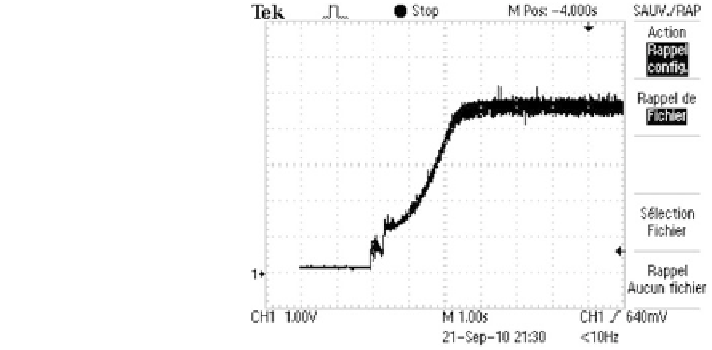Information Technology Reference
In-Depth Information
If we factorize the Eq.
15
, we have:
yN
x
T
N
h
ðÞ
¼h
N
ð
N
1
Þþ
GN
ðÞ
yN
ðÞ
ðÞ
h
ð
N
1
Þ
ðÞ
ð
20
Þ
3.4 Application of FCM Algorithm on the Station
of Irrigation by Sprinkling
Let us consider a system described by the Eq.
6
. Firstly, we approximate the
nonlinear function Eq.
6
by the model of Takagi-Sugeno (TS):
R
i
and x
kn
is A
in
then y
i
a
i
x
k
þ
:
if fix
k1
isA
i1
and x
k2
is A
i2
and
...
¼
b
i
ð
21
Þ
T
To represent the rule, we need use observations vector x
k
¼
½
x
k1
;
x
k2
; ...;
x
kn
the units fuzzy A
i1
;
A
in
to identify the parameters in the model
21
, we builds
the matrix of regression X and the vector of the output Y starting from measure-
ments
A
i2
; ...;
T
and Y
resulting from the
system such as: X
¼
x
1
;
x
2
; ...;
x
N
¼
T
with N
½
y
1
;
y
2
; ...;
y
N
n.
cation of T-S model parameters requires a taking away of the real
signals of irrigation station. Using a numerical oscilloscope, we took the real
dynamics of pressure and
The identi
fl
flow of the station of irrigation by sprinkling, then
(Figs.
6
,
7
and
8
):
These results are taken from connectors of the cabinet.
In order to initialize the iteration count l =0,we
fix the weighting degree
m = 2.75 what makes it possible to initialize the partial random matrix U. We pass
Fig. 6 Real curve of the
pressure evolution

Search WWH ::

Custom Search